Jeep Avenger vs Lexus LBX – Which model is better for everyday use?
Compare performance, boot capacity, efficiency and price at a glance.
Find out which car is the better choice for you – Jeep Avenger or Lexus LBX?
The Showdown: Jeep Avenger vs. Lexus LBX
As the automotive market continues to evolve towards sustainability, two distinct SUVs—the Jeep Avenger and the Lexus LBX—have emerged as frontrunners in their respective segments. While both vehicles share a commitment to performance and efficiency, they come equipped with unique technical specifications and innovations that set them apart. In this comparison, we’ll delve into the technical aspects and features of each model to help you choose the right SUV for your needs.
Performance and Powertrains
The Jeep Avenger offers a range of engine options, including electric, petrol MHEV, and petrol versions. The electric variant boasts a remarkable power output of 156 HP and a torque of 260 Nm, ensuring that it can accelerate from 0 to 100 km/h in just 9 seconds. With a battery capacity of 51 kWh and an electric range of up to 400 km, the Avenger stands out for its practicality in urban and suburban settings.
On the other hand, the Lexus LBX features a full hybrid engine with a power output of 136 HP and a torque of 185 Nm. This SUV reaches 100 km/h in 9.2 seconds, providing a competitive edge over its rival. However, it is important to note that the LBX's fuel consumption is more efficient, rated at 4.5 to 4.8 L/100 km.
Dimensions and Interior Comfort
In terms of dimensions, the Jeep Avenger is slightly shorter, measuring 4084 mm in length compared to the LBX's 4190 mm. However, the Avenger maintains a comparable width of 1776 mm, whereas the LBX measures 1825 mm. The Jeep can seat five passengers comfortably and offers a trunk capacity ranging from 325 to 380 liters. Conversely, the Lexus LBX accommodates four passengers and has a trunk capacity of 255 to 332 liters, showing a slight disadvantage in cargo space.
Technical Innovations
Both vehicles are equipped with cutting-edge technology to enhance the driving experience. The Jeep Avenger features advanced driver-assist systems and connectivity options, including a user-friendly infotainment interface that supports both Apple CarPlay and Android Auto.
In contrast, the Lexus LBX offers its own suite of technological advancements, including an advanced multimedia system and a highly efficient CVT (Continuously Variable Transmission) that contributes to its fuel economy. Furthermore, Lexus emphasizes luxury with premium materials and intuitive controls that elevate the driving experience.
Driving Dynamics and Handling
When it comes to driving dynamics, the Jeep Avenger is designed with versatility in mind. The availability of both front-wheel drive and all-wheel drive systems makes it adaptable for various road conditions and terrains, making it a suitable choice for adventurous drivers. The Avenger's curb weight, ranging between 1180 to 1520 kg, also contributes to its overall stability and handling in different environments.
The Lexus LBX, being a compact SUV, leans towards a sporty driving experience while ensuring comfort. With its slightly lower curb weight (1280 to 1365 kg), the LBX delivers responsive handling and a refined ride quality, making it ideal for urban driving.
Conclusion: Which SUV Takes the Crown?
Overall, the choice between the Jeep Avenger and the Lexus LBX boils down to personal preferences and driving styles. The Avenger excels in electric performance, passenger capacity, and off-road capability. Meanwhile, the Lexus LBX impresses with its hybrid efficiency, luxurious interior, and high-tech features. Both vehicles reflect a commitment to innovation and performance, making them worthy contenders in the ever-competitive SUV market.
Here’s where it gets real: The technical differences in detail
Costs and Efficiency:
Looking at overall running costs, both models reveal some interesting differences in everyday economy.
Jeep Avenger has a clearly perceptible advantage in terms of price – it starts at 21900 £, while the Lexus LBX costs 28300 £. That’s a price difference of around 6335 £.
Fuel consumption also shows a difference: Lexus LBX manages with 4.50 L and is therefore slight more efficient than the Jeep Avenger with 4.90 L. The difference is about 0.40 L per 100 km.
Engine and Performance:
Power, torque and acceleration are the classic benchmarks for car enthusiasts – and here, some clear differences start to show.
When it comes to engine power, the Jeep Avenger has a to a small extent edge – offering 156 HP compared to 136 HP. That’s roughly 20 HP more horsepower.
In acceleration from 0 to 100 km/h, the Jeep Avenger is hardly perceptible quicker – completing the sprint in 9 s, while the Lexus LBX takes 9.20 s. That’s about 0.20 s faster.
In terms of top speed, the Jeep Avenger performs to a small extent better – reaching 194 km/h, while the Lexus LBX tops out at 170 km/h. The difference is around 24 km/h.
There’s also a difference in torque: Jeep Avenger pulls evident stronger with 260 Nm compared to 185 Nm. That’s about 75 Nm difference.
Space and Everyday Use:
Cabin size, boot volume and payload all play a role in everyday practicality. Here, comfort and flexibility make the difference.
Both vehicles offer seating for 5 people.
In curb weight, Jeep Avenger is minimal lighter – 1180 kg compared to 1280 kg. The difference is around 100 kg.
In terms of boot space, the Jeep Avenger offers somewhat more room – 380 L compared to 332 L. That’s a difference of about 48 L.
In maximum load capacity, the Jeep Avenger performs evident better – up to 1277 L, which is about 283 L more than the Lexus LBX.
When it comes to payload, Jeep Avenger minimal takes the win – 502 kg compared to 475 kg. That’s a difference of about 27 kg.
Who wins the race?
The Jeep Avenger proves to be leaves the rival little chance and therefore becomes our DriveDuel Champion!
Jeep Avenger is the better all-rounder in this comparison.
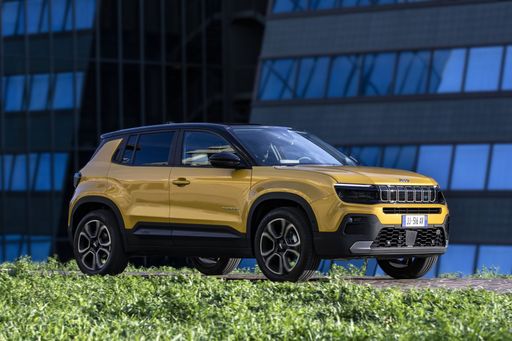 @ Jeep / Stellantis Media
@ Jeep / Stellantis Media
Jeep Avenger
Jeep Avenger
The Jeep Avenger shrinks Jeep's boxy, adventurous styling into a city-friendly electric crossover that looks just as at home on tight streets as it does on muddy weekend lanes. It's a savvy pick for drivers who want go-anywhere attitude without the truck-size ego — practical inside, lively around town and ready to tackle a bit of rough stuff when the mood strikes.
details @ Jeep / Stellantis Media
@ Jeep / Stellantis Media
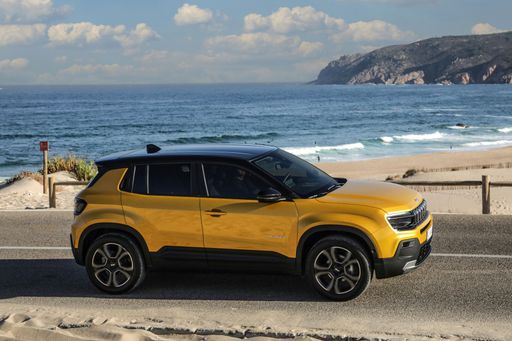 @ Jeep / Stellantis Media
@ Jeep / Stellantis Media
 @ Jeep / Stellantis Media
@ Jeep / Stellantis Media
 @ Jeep / Stellantis Media
@ Jeep / Stellantis Media
 @ Jeep / Stellantis Media
@ Jeep / Stellantis Media
Lexus LBX
The Lexus LBX wraps premium touches and a surprisingly spacious cabin into a compact crossover that’s perfectly at home in town or heading out on longer drives. It wears the badge with quiet confidence, serving up a refined ride and clever packaging for buyers who want Lexus polish without shouting for attention.
details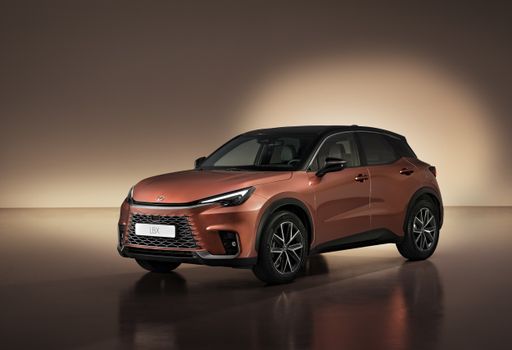 @ Lexus / Toyota Motor Corporation
@ Lexus / Toyota Motor Corporation
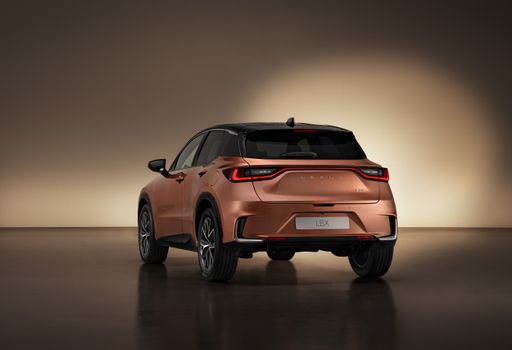 @ Lexus / Toyota Motor Corporation
@ Lexus / Toyota Motor Corporation
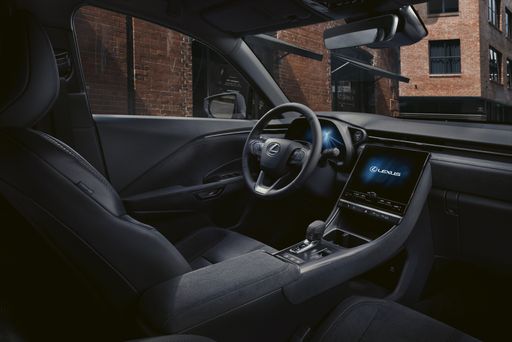 @ Lexus / Toyota Motor Corporation
@ Lexus / Toyota Motor Corporation
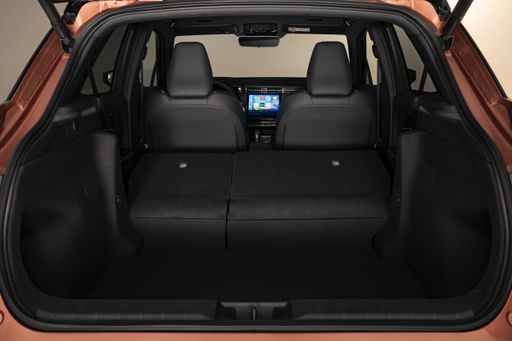 @ Lexus / Toyota Motor Corporation
@ Lexus / Toyota Motor Corporation
 @ Jeep / Stellantis Media
@ Jeep / Stellantis Media
|
 @ Lexus / Toyota Motor Corporation
@ Lexus / Toyota Motor Corporation
|
|
|
|
Costs and Consumption |
|
|---|---|
|
Price
21900 - 36900 £
|
Price
28300 - 40000 £
|
|
Consumption L/100km
4.9 - 5.7 L
|
Consumption L/100km
4.5 - 4.8 L
|
|
Consumption kWh/100km
15.50 kWh
|
Consumption kWh/100km
-
|
|
Electric Range
400 km
|
Electric Range
-
|
|
Battery Capacity
51 kWh
|
Battery Capacity
-
|
|
co2
0 - 129 g/km
|
co2
102 - 110 g/km
|
|
Fuel tank capacity
44 L
|
Fuel tank capacity
36 L
|
Dimensions and Body |
|
|---|---|
|
Body Type
SUV
|
Body Type
SUV
|
|
Seats
5
|
Seats
5
|
|
Doors
5
|
Doors
5
|
|
Curb weight
1180 - 1520 kg
|
Curb weight
1280 - 1365 kg
|
|
Trunk capacity
325 - 380 L
|
Trunk capacity
255 - 332 L
|
|
Length
4084 - 4088 mm
|
Length
4190 mm
|
|
Width
1776 mm
|
Width
1825 mm
|
|
Height
1527 - 1541 mm
|
Height
1560 mm
|
|
Max trunk capacity
1218 - 1277 L
|
Max trunk capacity
992 - 994 L
|
|
Payload
494 - 502 kg
|
Payload
455 - 475 kg
|
Engine and Performance |
|
|---|---|
|
Engine Type
Electric, Petrol, Petrol MHEV
|
Engine Type
Full Hybrid
|
|
Transmission
Automatic, Manuel
|
Transmission
Automatic
|
|
Transmission Detail
Reduction Gearbox, Manual Gearbox, Dual-Clutch Automatic
|
Transmission Detail
CVT
|
|
Drive Type
Front-Wheel Drive, All-Wheel Drive
|
Drive Type
Front-Wheel Drive, All-Wheel Drive
|
|
Power HP
100 - 156 HP
|
Power HP
136 HP
|
|
Acceleration 0-100km/h
9 - 10.6 s
|
Acceleration 0-100km/h
9.2 - 9.6 s
|
|
Max Speed
150 - 194 km/h
|
Max Speed
170 km/h
|
|
Torque
205 - 260 Nm
|
Torque
185 Nm
|
|
Number of Cylinders
3
|
Number of Cylinders
3
|
|
Power kW
74 - 115 kW
|
Power kW
100 kW
|
|
Engine capacity
1199 cm3
|
Engine capacity
1490 cm3
|
General |
|
|---|---|
|
Model Year
2023 - 2025
|
Model Year
2025
|
|
CO2 Efficiency Class
A, D, C
|
CO2 Efficiency Class
C
|
|
Brand
Jeep
|
Brand
Lexus
|
What drivetrain options does the Jeep Avenger have?
Available configurations include Front-Wheel Drive or All-Wheel Drive.
The prices and data displayed are estimates based on German list prices and may vary by country. This information is not legally binding.
